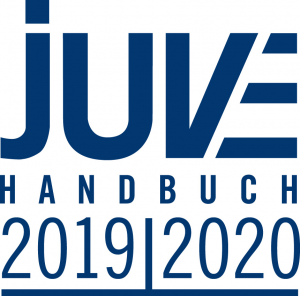INVESTOR-STATE CASES UNDER THE ENERGY CHARTER TREATY – SYSTEMIC (IN)COHERENCE ON THE TIDE OF THE ACHMEA SAGA
The ECJ’s Achmea judgment (C-284/16) has caused a stir in the arbitration community – also with regard  to the Energy Charter Treaty (“ECT”). Dr. Ewelina Kragiel, LL.M. examines: Are investor-state arbitration disputes under the ECT covered by Achmea? Is the emerging EU approach to investor-state dispute resolution (ISDS) coherent or anomalous? Might we face diverging interpretations of different ECT provisions, and will this lead to uncertainty and fragmentation in transnational energy investment law?
to the Energy Charter Treaty (“ECT”). Dr. Ewelina Kragiel, LL.M. examines: Are investor-state arbitration disputes under the ECT covered by Achmea? Is the emerging EU approach to investor-state dispute resolution (ISDS) coherent or anomalous? Might we face diverging interpretations of different ECT provisions, and will this lead to uncertainty and fragmentation in transnational energy investment law?
Competing Interpretations Attempting to Reconcile Contradictions
The ECT is a multilateral investment treaty in force since 1998. It is a “mixed treaty”, i.e. both the EU Member States and the European Union itself, alongside a number of third countries, are parties to it (currently, there are 53 signatories and contracting parties) offering protection of investments made in the energy sector.
As a reminder, in Achmea, the ECJ held that arbitration clauses contained in intra-EU BITs violate the EU law and are therefore inapplicable. According to the ECJ, Member States may not validly agree on a dispute-resolution procedure that causes this procedure to become unavailable.
In his Opinion delivered on 19 September 2017 in the Achmea case, Advocate General Wathelet discussed the compatibility of intra-EU investment arbitration with the EU law in the field of energy under the ECT. According to the Advocate General, the ECT was concluded as an ordinary multilateral treaty in which all the Contracting Parties (the EU, its Member States and third countries) participate on an equal footing. Consequently, the Advocate General expressed the view that “the material provisions for the protection of investments provided for in the ECT and the ISDS mechanism also operate between Member States”.
The award rendered in the case Masdar Solar & Wind Cooperatief U.A. v. Spain (ICSID Case No. ARB/14/1) on 16 May 2018 expressly pointed out that in the Achmea judgment the ECJ is silent on the subject of the ECT. The ICSID Tribunal adopted the Advocate General’s reasoning on the distinction between
- the investment protection mechanisms to be found in BITs concluded by Member States, on the one hand; and
- the ISDS provisions of the Energy Charter Treaty on the other hand.
The tribunal concluded that the impact of Achmea is limited to intra-EU bilateral investment treaties, and that it does not apply to the ECT.
Recently, these same questions have been considered by the ICSID arbitration tribunal in Vattenfall AB and others v. Germany (ICSID Case No. ARB/12/12). On the 31 August 2018 the tribunal issued a decision on the Achmea issue addressing the implications of the ECJ’s Achmea judgment on the ECT. The Tribunal has rejected the late jurisdictional objection raised by Germany in April 2018 to dismiss claims pending before this Tribunal due to the lack of the jurisdiction (a hearing on liability and quantum had been held back in 2016). The Tribunal determined that the ECT provisions cannot be interpreted to exclude intra-EU investor-State arbitration. The Tribunal also noted that there was no “disconnection clause” in the ECT (“disconnection clauses” are used in mixed agreements to ensure targeted provisions will only apply vis-à-vis third parties and not as between EU Member States). The tribunal also discusses arguments based on lex posterior, lex specialis and the modification of the ECT, none of which lead the tribunal to assume that the TFEU shall take priority over the ECT in intra-EU cases.
Opposing Positions
In a Communication concerning protection of intra EU investment of 19 July 2018, the European Commission says the Achmea judgment is also relevant to ISDS under the ECT. According to the Commission, Article 26 of the ECT is inapplicable to disputes between investors from different EU Member States, due to the primacy of EU law.
The EC acting as the intervenor in the above-cited case Vattenfall AB and others v. Germany made observations on the interpretation of the ECT and thereby reinforced its position on intra-EU arbitration. The EC puts forth that the ECT should be interpreted (based on the Vienna Convention on the Law of Treaties and the general principle of autonomy of EU law) in such a way as to avoid any conflict with EU law. As a consequence, the Achmea judgement applies “equally to intra-EU investor-State arbitrations under the ECT since intra-EU investment arbitral tribunals” (and tribunals under the ECT) are not “national courts or tribunals”. This applies even to ongoing investment cases.
Soon, the ECJ will render Opinion 1/17, requested by Belgium pursuant to Article 218(11) TFEU, on whether the EU’s proposed Multilateral Investment Court System in the Comprehensive Economic and Trade Agreement between Canada and the European Union and its Member States (“CETA“) is compatible with EU law. The ECJ’s opinion will have far-reaching consequences. Notably, the ECJ already found in the Opinion 2/15 that an ISDS mechanism in the Free Trade Agreement between the EU and the Singapore of 16 May 2017 (similar to the one in CETA) falls within a competence shared between the EU and the Member States. Based on Article 9.11.2 of the EU-Singapore FTA, both the EU and the EU Member States may be parties to such disputes as the respondent. The claimant investor may decide to submit the dispute to arbitration, without that Member State being able to oppose this, which as a result removes disputes from the jurisdiction of the courts of the Member States and therefore cannot be established without the Member States’ consent. The EU-Singapore FTA sets up a modern and reformed Investment Court System for resolving disputes.
Further Considerations
Both, termination of ECTs only among the EU Member States (as it has been undertaken with regard to BITs) and denunciation with respect to the ISDS provisions may deny the object and the purpose of the ECT, deprive it of its practical purpose, and lead to fragmentation und lack of predictability. Thus, it could result in the EU’s responsibility for internationally wrongful acts based on customary public international law regarding the responsibility of international organisations. The termination of the ECT by the EU Member States would shatter a proper legal framework for investment in the energy sector and is hard to imagine due to practical reasons.
Conclusion
To date, the ECJ has not explicitly considered the ISDS mechanism foreseen in the ECT. Questions regarding the applicability of the Achmea judgement to the multilateral treaty on investment in the field of energy remain highly disputable. Regardless of competing interpretations given by the EU institutions, EU Member States and disparate case law, the attempt to reconcile contradictions will be a complex and multidimensional process.











